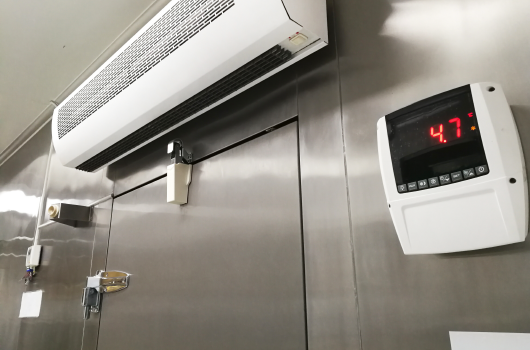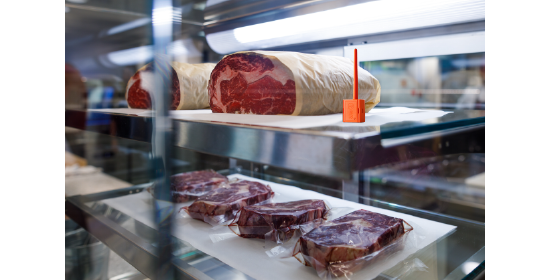- Hero Banner
- Welcome to Klipspringer
- Our product range
- Inline Banner
- Accreditations
- Who We Work With
- Who we work with
- Shadow Boards & Visual Management
- Segregation Screens
-
Hygiene Equipment
- Hygiene Brushes
- Squeegees
- Handles
- Scouring Pads & Holders
- Mopping
- High Reach Cleaning
- Hand and Lobby Pans
- Spill Kits
- Wipes & Cloths
- Buckets
- Waste Bins, Wheelie Bins & Litter Pickers
- T-Bars, Dusters & Window Cleaning
- Sanitiser
- Future First EverSea Range
- Inspection Torch
- IndeliMarking
- Antimicrobial Door Handle Covers
-
Production Equipment
- Shovels & Forks
- Paddles
- Scrapers & Spatulas
- Scoops
- Jugs, Measuring Cylinders & Sprayers
- Buckets
- Stainless Steel Equipment
- Cutting Boards
- Knives
- Identification Tags and Cable Ties
- Safety Steps
- Food Contact Suitable Food Breaker
- Sampling Equipment
- ESD and Anti-static Equipment
- Lockout Stations, Tagout Stations and Padlocks
- Safety Matting
- Detectable Utensils
- Food Handling Containers
-
Instrumentation
- Starter Kits
- Thermometers and Probes
- Wireless Monitoring Systems
- Data Logging
- Allergen & Hygiene Monitoring
- In-House Thermometer Verifiers
- Humidity Measurement
- pH Measurement
- Refractometers
- Scales & Balances
- Calibration Reference Weights
- Consistometers
- Conductivity Measurement
- Water Activity Meter
- Food Oil Quality Measurement
- Gas Analysers
- Moisture Analysers
- Instrument Stations
- 'Buy it now' Instrument Stations
- Digital Quality Management System
- Other Instrumentation and Parameters
- PPE & Gloves
- Calibration & Service
- My Account
For a better user experience we recommend downloading chrome
- How you can monitor the temperature of your meat this summer
For a better user experience we recommend downloading chrome
Same-day despatch on orders placed before 4pm*
Free delivery on orders over £300
Got a question? Speak to our industry experts on 01473 461800
Got a question? Speak to our industry experts on 01473 461800

.*
As we enjoy the Summer months, we can expect warmer weather and, along with it, an increased need to safeguard perishable stock, ranging from salad right through to ice. But probably one of the most valuable areas within food requiring close temperature control is meat, with restaurants, retailers and butchers often having thousands of pounds worth in storage at any one point in time.
Refrigerators should be keeping meat between +1 to +5°C. This temperature will ensure the minimising of any bacterial growth. And, with meat storage time also differing, such as beef’s three to five-day fridge storage time opposing chicken’s one to two days, it’s significant that a keen eye is kept on temperature. If you’re freezing your meat it should be stored at -18°C or colder. There’s nothing worse than having a quantity of stock spoiling due to neglect.
From the Supplier to the Counter
Your suppliers must deliver all perishable foods in a refrigerated van to ensure they arrive at the right temperature. Try to check the food’s temperature immediately – it should be coming out at +8°C or colder for the chilled foods and no warmer than -12°C for frozen food. Asking the driver politely to note the temperatures on your delivery notes shows diligence and can also cover you if the food is delivered in an unacceptable state.

As summer arrives, the days become busier.
As summer rolls around and the amount of people walking the high street undoubtedly increases, supermarkets and specialist meat retailers alike will notice the pace of their days change. Brits spent £3,521 billion on beef, lamb and pork alone last year, so with the demand for fresh over-the-counter meat still high, it’s important not to let that extra pressure keep you from monitoring the temperature of your meat.
As peak times roll around it’s easier to lose track of monitoring your product, and even with the most proactive and attentive team – it can be difficult not to place all emphasis on the customer and forget about temperatures within your window displays, or even your back-room storage. It’s vital that you’re measuring temperatures and are keeping a written record of the data.
Thermometer Technology
Every food premises that is preparing, handling or selling potentially hazardous foods should be using thermometers to monitor temperatures; these thermometers should be accurate to ±1 °C. Temperatures at the meat's centre can differ from the surface temperature, so do be aware of this.
Ensuring your thermometers are well sanitised, maintained and calibrated correctly can be the difference between the maintenance and spoilage of your meat. Having up to date thermometer technology has the benefit of keeping you one step ahead of any potential mishaps, and here at Klipspringer, we’d always advise in the investment.
Wireless Cloud Thermometers
We know that one moment of negligence could cause your business a significant loss of stock, and that’s why at Klipspringer we’ve developed our SenseAnywhere system. With the ability to wirelessly measure temperature, humidity and motion, it will immediately alert users when something’s not quite right. Our customers assure us of its value – take a look at Andrew’s Quality Butchers’ story to see how it helped his busy retail butcher avoid a very costly issue.
Klipspringer Temperature Monitoring Solutions
You can find out more about Klipspringer's range of temperature monitoring solutions here.
View our temperature monitoring solutions
Klipspringer's Updated 2020 Range
Our range of temperature monitoring solutions continues to grow and develop, with low-cost wireless data logging systems capable of monitoring product in freezers, chillers and cold stores. A set up time of around 5 minutes and peace of mind about your stock security forever after!

“I can now sleep at night knowing that any issues will swiftly be brought to my attention.”
Read more here
.*
.*



